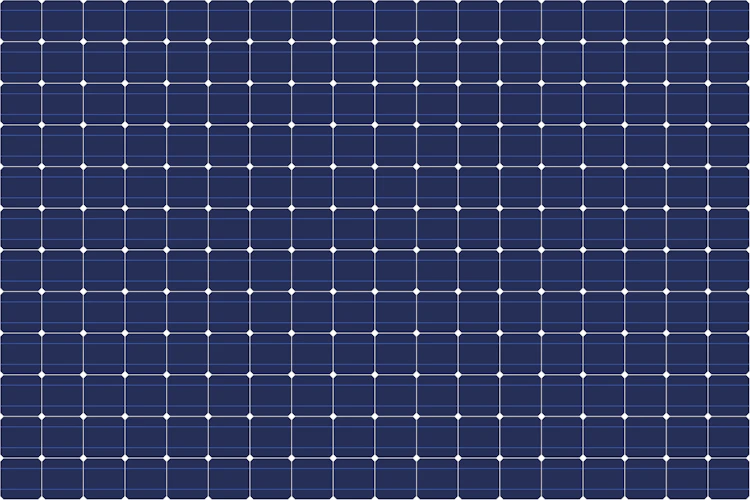
How does a solar panel work?
The Sun is 4.5 billion years and an abundant source of clean and renewable energy, hitting the Earth with the equivalent output of around 1000 watts per m2 on a cloudless day. We can now easily convert solar energy into electricity thanks to solar panels. But how exactly do they work?
Solar cells - where the magic happens
Solar cells, or photovoltaic cells (PV cells), are at the heart of a solar panel. These cells comprise thin silicon layers, with added elements like boron or phosphorus to charge the silicon electrons. When sunlight hits the solar panel, it causes these charged electrons to move, creating an electric current. This flow of electrons is what generates electricity.
The difference between solar cells and solar panels
It's important to note the distinction between solar cells and solar panels. Solar cells are the building blocks of solar panels. In contrast, solar panels, or PV modules, are an assembly of interconnected solar cells integrated into a sturdy framework. This allows for more electrical energy than a single solar cell.
What are solar cells made from?
The most common material used for solar cells is silicon, with monocrystalline solar cells being the most efficient due to their higher degree of purity. Ninety percent of the world's solar panels are based on silicon. Monocrystalline solar cells have a utilization rate of 15-18%, while polycrystalline solar cells have a slightly lower rate of 11-14% per square meter.
How to make the most of solar energy Store it!
If the electrical energy produced isn't used to power something directly. In that case, it can be stored in a battery for later use. That way, solar energy powers things even when the Sun isn't shining. More importantly, renewable energy can be made available 24 hours a day.
Solar and charging: How long does it take to charge a battery?
The solar panel's output (power generated at any time) depends on the panel's size and the solar cell's utilization rate. It is measured in watts (W). The battery capacity (how much power you can get out of it) is measured in watt-hours (Wh). To know how long it takes to fully charge a battery, divide the battery capacity (Wh) by the solar panel output (W).
For example, suppose the battery's capacity is 9.6 Wh, and the solar panel output is 1.6 watts. In that case, it will take 9.6 / 1.6 = 6 hours to recharge the battery under optimal conditions (weather and the angle of the solar panel can affect the time it takes)
Information about a solar panel output (W) and battery capacity (Wh) is usually available in accompanying product information.
Does a solar panel work better in warmer weather?
One common misconception is that solar panels work better in warmer weather. Solar cell products charge just as well in the winter as they do in the summer. The critical factor is ensuring that the panel is positioned to face the sun, regardless of the temperature.
Solar panels are an efficient and sustainable way to generate electricity from sunlight. By understanding how they work and how to maximize their potential, we can take full advantage of this clean and renewable energy source.
Whether it's powering homes, businesses, or portable devices, solar panels play a crucial role in our transition toward a more sustainable future.